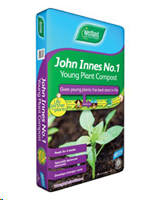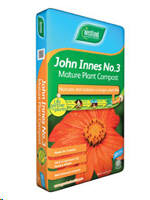There are many different compost types available and it may seem like a daunting decision but with a little guidance it’s really very simple to make the correct decision to help your plants flourish.
The main things to consider when selecting your growing media or compost are the plants that you want to grow in it and where the plant will be growing.
Will the plant be growing in a bed or border or in a container or hanging basket?
Is the plant acid loving like rhododendrons or camellias? (Acid loving plants need an ericaceous compost to excel) or a Rose, Tree or Shrub?
When planting in beds and borders it is essential to first improve the soil structure and nutrient levels and the best way to do this is by incorporating plenty of well rotted organic matter. The best way to do this is to dig in organic Farmyard Manure and Bone Meal Root Builder. Add a little West + Rose, Tree and Shrub Compost & 4 Month Feed to the bottom of the planting hole.
Ericaceous Plants
If you are looking to plant ericaceous plants in your borders first test your soil. The simplest way to do this is to use a soil testing kit available in local garden centres and DIY stores. For more help see our guide on How to Test your Soil. If your soil is acidic it means that different plants will thrive in your soil, these include most ericaceous plants such as azaleas, rhododendrons and camellias. If your soil is more alkaline then the ericaceous plants will struggle to grow in your garden unless you grow them in pots of ericaceous compost. Choose either West + Ericaceous Compost & 4 Month Feed or John Innes Ericaceous Compost. Both can be used in pots for containerised plants or added to beds and borders to help plants establish.
In Containers
If you are potting Trees, Shrubs and Roses into containers, unless they are acid loving, the best option to go for is West + Rose, Tree and Shrub Compost & 4 Month Feed. This is specially formulated to provide the specific nutrient requirements of these plants whilst giving superior moisture control, reducing the need for watering. It is also enriched with root builder for better plant establishment.
Also great for container grown specimens is John Innes No 3 Mature Plant Compost which is rich in nutrients producing bigger, beautiful flowers and healthier, greener foliage.
It is a good idea to add a top dressing of the appropriate compost to containers each season. This will provide extra nutrients to depleted reserves and combined with feeding and will help plants to thrive.
Propagating
If you are propagating cuttings from trees or shrubs fill large flowerpots or root trainers with a quality, gritty compost. John Innes No 1 Young Plants Compost is a good choice. When they have rooted they can be repotted into larger pots of John Innes No 2 Potting-On Compost or planted out into the garden.





